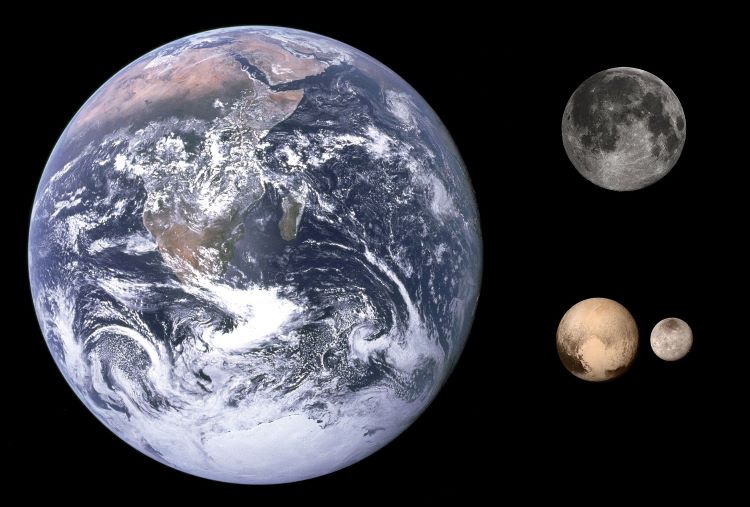A recent study published in the Monthly Notices of the Royal Astronomical Society examines formation mechanisms for how binary planets—two large planetary bodies orbiting each other—can be produced from a type of tidal heating known as tidal dissipation, or the energy that is shared between two planetary bodies as the orbit close to each other, which the Earth and our Moon experiences. This study comes as the hunt for exomoons and other satellites orbiting exoplanets continues to expand and holds the potential to help astronomers better understand the formation and evolution of exoplanets and their systems. So, why is studying binary planets specifically important? “Binary planets are not present in our Solar System, at least nominally, given the similarities with the Pluto-Charon system which, however, is a dwarf planetary analog,” Dr.
Cecilia Lazzoni, who is a Postdoctoral Research Fellow at the University of Exeter and lead author of the study, tells Universe Today. “Proving new formation mechanisms that enable the formation of such pairs would justify the existence of a complete new type of worlds. For example, if a Jupiter-like planet could host an Earth-like satellite, that satellite could be in principle habitable though far from its star, using the energy coming from the giant planet.
” The Pluto-Charon duo is currently hypothesized to have likely formed from Like the Earth’s Moon, which was from a collision of another planetary body into Earth. Additionally, Charon is also more tidally locked with Pluto that our Moon is with the Earth, as Charon orbits over the same spot above Pluto, whereas our Moon’s freely orbits around the Earth. However, what makes the Pluto-Charton system unique is Charon’s size compared to Pluto, as its diameter and mass are half and one-eighth of Pluto, respectively, making it the largest moon compared to its parent body in the entire solar system, and the center of gravity between the two bodies is more centered than the Earth-Moon system.
It is for these reasons that the Pluto-Charon system is often referred to as a dwarf planet binary system. Image comparing the sizes of Earth and its Moon (top right) and Pluto and its largest moon, Charon (bottom right). (Credit: NASA, JHUAPL, SWRI, Gregory H.
Revera) For the study, the researchers conducted seven simulations using amended computer code emanating from a 1998 study that analyzed terrestrial planet formations, with the amendment accounting for energy distribution between two planetary bodies through their tidal interactions, or as they tug on each other like the Earth and Moon. The researchers used a variety of set-ups for the simulation, specifically pertaining to the number of initial planets within the system and range from two to five initial planets. For each set-up, the team conducted 10 sets of simulations across 100 systems spanning 1.
5 million years. In the end, the team found the inclusion of tidal dissipation is a logical method in producing binary planets. Short video from study lead author, Dr.
Cecilia Lazzoni visualizing how binary planets are formed through tides. Dr. Lazzoni tells Universe Today, “We found out that forming binary planets in systems with 2 or more giant planets is quite easy when considering dynamical interactions and tidal dissipation.
Basically, one system out of ten can host a binary planet. ” Dr. Lazzoni also tells Universe Today that motivation for this study came from the discovery of the potential binary planet DH Tau Bb in 2020 that was published in Astronomy & Astrophysics, for which she was the lead author.
The study also notes additional binary planets used as motivation for this study include Kepler 1625 b-i and Kepler 1708 b-i. As noted, this study comes as the hunt for exomoons and satellites orbiting exoplanets continues to expand with several moons within our solar system potentially harboring life, specifically Europa, Enceladus, and Titan. Therefore, further understanding binary planets could help scientists better understand the conditions necessary for sustaining life beyond our solar system.
What new discoveries will researchers make about binary planets in the coming years and decades? Only time will tell, and this is why we science! As always, keep doing science & keep looking up! The post Where are All the Double Planets? appeared first on Universe Today. .
From: universetoday
URL: https://www.universetoday.com/164456/where-are-all-the-double-planets/



